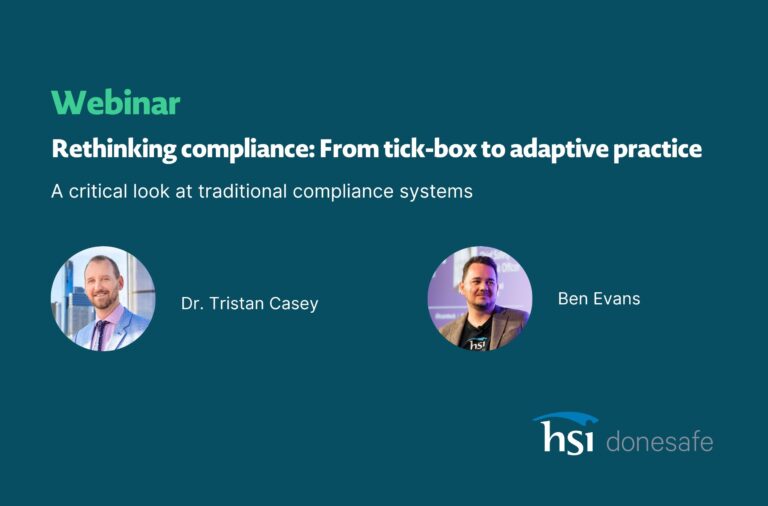
Top Safety pain points reported by Donesafe clients
Weekly, we speak to a heap of safety, quality, and environment professionals all looking to solve
various pain points in their organization. While there are honestly hundreds of pain points we hear
about from these professionals, we can’t reveal them all, mainly because you simply don’t have time
to read them all. (See pain point #2 in the second part to this series.)
Instead, we did our best to sort them into 12 categories of pain points. Six are outlined in the article
below, with a further six outlined in the second part of this series. How many can you relate to? Are
there any that you didn’t realize applied until now?
#1 Reducing the Occurrence of Common Injuries
Sprains and strains, slips, trips and falls, cuts and contusions, and back injuries are among the most
common workplace incidents. Typical responses to these issues include engineering, buying new
products, adding more policies and procedures, reintroducing the same compliance training, and
telling employees to be more careful.
Unfortunately, these measures have been shown to have little long-term impact because the
hazards were already known. Hidden danger does not lie behind the majority of the pain points that
follow. These injuries affect the company’s TRI rate (total recordable injuries) and can lead to a
continual struggle to bring that rate down.
#2 Employee Engagement and Overall Safety Culture
The old ‘us vs. them’ mentality is still present in many organizations. There continues to be a
disconnect between management and frontline workers. No matter what kind of changes are made
within the facility, employees will not be engaged if they feel the company is only looking out for
itself while making their lives more difficult. The most common struggle is to get employees to take
personal accountability for their own safety. The problem is bad enough if it were to stop there, but
there are several spin-off effects. When employees are not engaged in the safety culture,
supervisors and employees will witness at-risk behavior but not intervene. Productivity and morale
are low. And when these problems occur, OHS managers rarely see a clear path to improving
engagement and building a stronger safety culture.
#3 Workers Ignoring Rules and Regulations
After an incident, core EHS teams are often left sitting in a boardroom asking, “Why? … How?”
Some employees take known risks, choose shortcuts, or ignore the rules and regulations that have
been set out for them. And when these lead to injuries, it can leave health, safety, and quality
professionals feeling helpless or even thinking workers deliberately ignore rules, which is often not
the case. Clearly, providing a set of rules or equipment is not enough. (Choosing not to wear the PPE
provided can have devastating results). It’s as if there needs to be two safety playbooks—one that
contains all the necessary, compliance measures, and one that teaches safety managers how to
influence employees to actually follow them and become EHS leaders to others.
#4 Perception of Business Alignment / Executive Buy-in
Any company head will tell you that safety is one of their top priorities. But a behind-the-scenes look
usually tells a different story. When stacked against production, downtime and overall cost, safety,
quality, and compliance often take a back seat. EHS leaders need to prepare a business case for
securing more budget to improve compliance, but this can be difficult. EHS managers know
intuitively that proper systems will actually save the organization money and reduce the risk of
reputational damage, but many aren’t able to demonstrate that to the CFO. Aligning the goals of the
EHS team, with the core goals of the organization, is key.
#5 Controlling Costs and Increasing Efficiency
Because of the variety of tasks that a facility manager oversees, they are often highly concerned with
operation and management (O&M) costs. Budget control and maintenance is a key element of the
day-to-day of any facility manager, evaluating data and reports to identify areas where adjustments
can be made to maximize efficiency. You’ll likely know a facility manager when you meet one
because they are on a constant hunt find ways to improve the operational infrastructure while
reducing the budget, which is their biggest challenge of all.
#6 Training Flexibility and Reach
With workers operating on different geographical sites, languages, and shifts, and often on tight
schedules, it can be difficult to bring workers together for classroom or group training. Complicating
matters are the wide variety of state, federal, or specific facility-based regulations that cover daily
activities. Even when it is possible to get workers together for training, it’s difficult to ensure they
have grasped all the necessary information.
Donesafe has recently seen a spike in demand for ‘just in time’ training, which is possible in our
platform. This essentially delivers on-demand instruction to help solve these issues, allowing EHS
managers to assign and administer training courses or materials as needed, and confirm training
requirements are being met with at-a-glance management and completion tracking. Workers can
complete training according to their own schedules, and at their own pace, allowing them to better
comprehend the material.
Don’t take it from us – Here’s what our clients say.
Share:




